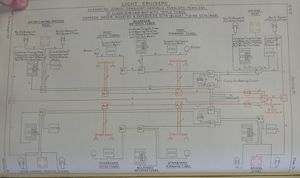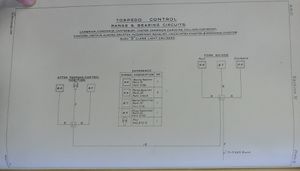Danae Class Cruiser (1917)
The eight light cruisers of the Danae Class (sometimes called the Dragon Class or the Dunedin Class or the Diomede Class, perhaps with some distinction not apparent now) were completed between 1918 and 1922. An additional four planned ships were not completed.
| Overview of 8 vessels | |||||
|---|---|---|---|---|---|
| Citations for this data available on individual ship pages | |||||
| Name | Builder | Laid Down | Launched | Completed | Fate |
| Danae | Armstrong, Whitworth & Company | 11 Dec, 1916 | 26 Jan, 1918 | 18 Jun, 1918 | Sold Jan, 1948 |
| Dauntless | Palmer Shipbuilding and Iron Company | 3 Jan, 1917 | 10 Apr, 1918 | 26 Nov, 1918 | Sold Feb, 1946 |
| Dragon | Scotts Shipbuilding and Engineering Company | Jan, 1917 | 29 Dec, 1917 | 10 Aug, 1918 | Scuttled 8 Jul, 1944 |
| Delhi | Armstrong, Whitworth & Company | 29 Oct, 1917 | 23 Aug, 1918 | 31 May, 1919 | Sold Jan, 1948 |
| Dunedin | Armstrong, Whitworth & Company | Nov, 1917 | 19 Nov, 1918 | 13 Sep, 1919 | Torpedoed 24 Nov, 1941 |
| Durban | Scotts Shipbuilding and Engineering Company | Jan, 1918 | 29 May, 1919 | Nov, 1921 | Scuttled 9 Jun, 1944 |
| Despatch | Fairfield Shipbuilding and Engineering Company | 8 Jul, 1918 | 24 Sep, 1919 | Jun, 1922 | Sold Apr, 1946 |
| Diomede | Vickers | 3 Jun, 1918 | 29 Apr, 1919 | Oct, 1922 | Sold Apr, 1946 |
Machinery
Generators
In 1916, it was stated that ""C" and "D" class light cruisers" have three 52.5 kw dynamos at 105 volts.[1]
Armament
The ships were armed as follows.[2]
Guns
- Six 6-in 45cal B.L. Mark XII guns on C.P. XIV mountings on the centre-line with a maximum elevation of 30 degrees.[3][4] The guns had armoured shields of 1.5 inches on the face, 1 inch on sides and top, weighing 4.25 tons.[5]
- Two 3-in 20cwt Q.F. Mark I on H.A. mountings
- Two 2-pdr pom-poms
Torpedoes
- Twelve 21-in above water tubes on four triple mountings disposed in pairs abreast, bearing 60-120 degrees.[6]
As the 6-in guns fired over these, they likely proved untenable for manned firing as the 6-in guns would have necessitated a blast shield projecting fully 18 feet from the muzzle. The ugly expedient taken was to train the tubes to a pre-arranged bearing on coming to action stations and to use remote firing from the primary and secondary control positions.[7]
Fire Control
Range Dials
In 1918, it was ordered that these and ten other classes of light cruisers should receive "range instruments for concentration of fire". Presumably, this meant range dials.[8]
As of 1920, Diomede and Despatch had a single Range Dial Type C with a 9 foot dial and the other six ships had two Type Cs with 9 foot dials and a Type L.[9]
Mechanical Aid-to-Spotter
By 1920, all the ships were likely equipped with four Mechanical Aid-to-Spotter Mark II*s. Delhi, Durban and Dunedin had Elliott's Bearing Transmitters, and the others the more customary Evershed arrangement. The installations generally consisted of placing one on each side of the foretop, driven by flexible shafting from a gearbox on the director tower (or the Evershed rack).[10]
Supplies of these devices began in June 1918.[11]
Rangefinders
Sometime during or after 1917, an additional 9-foot rangefinder was to be added aft to augment torpedo control.[12]
By 1918, it was determined that the ships in the first group would probably eventually carry three 12-foot rangefinders as in the Caledon class, two forward and one aft. The second group's aft R.F. would be 15 feet, fitted with E.E. and T.L. type hand-following gear. The two forward rangefinders in all would be able to transmit to the T.S., fore top, and aft torpedo control position.[13]
By 1921, the ships were equipped as follows.[14]
- Fore bridge, port and starboard: two 9ft F.Q. 2s on M.Q. 1 & M.P. 3 mountings
- After control: 12ft F.Q. 2 on M.P. 3
- High Angle: 2m F.T. 29 on M.T. 10
Diomede & class (whichever others this might mean):
- Fore bridge, port and starboard: two 12ft F.Q. 2s on M.Q. 12 mountings
- After control: 15ft F.Q. 10 on M.Q. 11
- High Angle, between funnels, port & starboard: two 2m F.T. 29s on M.T. 10s
Delhi & class (whichever others this might mean):
- Fore bridge, port and starboard: two 12ft F.Q. 2 on M.Q. 12 mountings
- After control: 12ft F.Q. 2 on M.Q. 1
- High Angle: 2m F.T. 29 on M.T. 10
Others (?):
- Fore bridge, port and starboard: two 12ft F.Q. 2s on M.Q. 1 & M.P. 3 mountings
- After control: 12ft F.Q. 2 on M.P. 3
- High Angle: 2m F.T. 29 on M.T. 10
Evershed Bearing Indicators
These ships almost certainly had Evershed gear for gun control from delivery, and were the first new light cruisers to also feature Evershed installations for searchlight control.[15]
Gunnery Control
Control Positions
Control Groups
Directors
All ships were completed with gunnery directors in place.[16] The director was in a tower on a pedestal mounting and may have been augmented by use of their "X" gun as a directing gun as on the earlier Caledon class ships.[17]
The ships of the first group, at least, had 6-in P. XIII Type Elevation Receivers with electrical tilt correction capable of indicating 30 degrees elevation, Pattern V.E. 2. Their Small Type Training Receivers were pattern number 20 on #1 to #4, whereas #5 and #6 had pattern number 21.[18]
Transmitting Stations
Dreyer Table
All eight ships carried a Dreyer Table Mark III*, Dauntless, Danae and Dragon possessing a modified form.[19]
Fire Control Instruments
Torpedo Control


In 1916, it was decided that all light cruisers of Bristol class and later should have torpedo firing keys (Pattern 2333) fitted on the fore bridge, in parallel with those in the CT, and that a flexible voice pipe be fitted between these positions.[22]
By 1917, modifications to the torpedo control voice pipe system were desired. The voice pipes (port and starboard) to the CT were ordered to be removed in 1917, and in 1918, stop cocks were to be added just abaft the after torpedo positions to allow the after control position to be chopped out to improve the acoustic efficiency of the networks to remaining the rangefinder platform control position forward. [23]
In the ships of the second group, there was no C.T., but a splinter-proof control platform elevated 6 feet above and behind the compass and maneuvering platform. The torpedo control instruments were on each side on the forward part of this platform. The secondary torpedo and gun control position was abaft the after funnel. A 9-foot torpedo rangefinder was provided.[24]
In 1919, it was decided that the ships in this class, including Despatch and Diomede, which were still under construction, should each receive a Renouf Torpedo Tactical Instrument Type A.[25] A year later, these allocations were reiterated.[26]
See Also
Footnotes
- ↑ Annual Report of the Torpedo School, 1916. p. 120.
- ↑ Conway's All the World's Fighting Ships 1906–1921. p. 61.
- ↑ Progress in Naval Gunnery, 1914-1918. p. 10.
- ↑ The Director Firing Handbook. p .144.
- ↑ The Technical History and Index, Vol. 4, Part 28. p. 18.
- ↑ Annual Report of the Torpedo School, 1916. p. 35.
- ↑ Annual Report of the Torpedo School, 1916. p. 35. I am inferring that the faults in Caledon carried through to this class.
- ↑ Annual Report of the Torpedo School, 1918. p. 376. (C.I.O. 3492/18, N.S. 11226/18).
- ↑ Manual of Gunnery (Volume III) for His Majesty's Fleet, 1920. p. 45.
- ↑ Manual of Gunnery (Volume III) for His Majesty's Fleet, 1920. p. 35, 37.
- ↑ The Technical History and Index, Vol. 3, Part 23. pp. 25-6.
- ↑ Annual Report of the Torpedo School, 1917. p. 199. (possibly pertinent: C.I.O. 481/17).
- ↑ Annual Report of the Torpedo School, 1918. p. 179 (A.L.G. 4657/18).
- ↑ Handbook for Naval Range-Finders and Mountings, Book I. p. 169.
- ↑ The Technical History and Index, Vol. 3, Part 23. p. 29.
- ↑ The Technical History and Index, Vol. 3, Part 23. p. 11.
- ↑ Handbook of Captain F. C. Dreyer's Fire Control Tables, 1918. p. 142 and plate opposite.
- ↑ The Director Firing Handbook. pp. 144, 146.
- ↑ Pamphlet on the Mark III* Dreyer Table. p. 1.
- ↑ Annual Report of the Torpedo School, 1917. Plate 75.
- ↑ Annual Report of the Torpedo School, 1917. Plate 76.
- ↑ Handbook for Fire Control Instruments, 1914. p. 146.
- ↑ Annual Report of the Torpedo School, 1918. p. 214. CT VP removal per C.I.O. 4037/17.
- ↑ Annual Report of the Torpedo School, 1917. p. 209.
- ↑ Annual Report of the Torpedo School, 1919. p. 119.
- ↑ Annual Report of the Torpedo School, 1920. pp. 90-1.
Bibliography
- Admiralty, Gunnery Branch (1917). The Director Firing Handbook. O.U. 6125 (late C.B. 1259). Copy No. 322 at The National Archives. ADM 186/227.
- Admiralty, Gunnery Branch (1910). Handbook for Fire Control Instruments, 1909. Copy No. 173 is Ja 345a at Admiralty Library, Portsmouth, United Kingdom.
- Admiralty, Gunnery Branch (1918). Handbook of Captain F. C. Dreyer's Fire Control Tables, 1918. C.B. 1456. Copy No. 10 at Admiralty Library, Portsmouth, United Kingdom.
- Admiralty, Technical History Section (1919). The Technical History and Index: Fire Control in H.M. Ships. Vol. 3, Part 23. C.B. 1515 (23) now O.U. 6171/14. At The National Archives. ADM 275/19.
- Admiralty, Gunnery and Torpedo Division (July, 1919). Progress in Naval Gunnery, 1914-1918. C.B. 902. The National Archives. ADM 186/238.
| Danae Class Light Cruiser | |||||||||||||||||||||||||||||||||||||||||||||||||||||||||||||||||||||||||||||||||||||||||||||||||||||||||||||||||||||||
| First Group | |||||||||||||||||||||||||||||||||||||||||||||||||||||||||||||||||||||||||||||||||||||||||||||||||||||||||||||||||||||||
| Danae | Dauntless | Dragon | |||||||||||||||||||||||||||||||||||||||||||||||||||||||||||||||||||||||||||||||||||||||||||||||||||||||||||||||||||||
| Second Group | |||||||||||||||||||||||||||||||||||||||||||||||||||||||||||||||||||||||||||||||||||||||||||||||||||||||||||||||||||||||
| Delhi | Dunedin | Durban | Despatch | Diomede | |||||||||||||||||||||||||||||||||||||||||||||||||||||||||||||||||||||||||||||||||||||||||||||||||||||||||||||||||||
| <– | Ceres Class | Minor Cruisers (UK) | Capetown Class | –> | |||||||||||||||||||||||||||||||||||||||||||||||||||||||||||||||||||||||||||||||||||||||||||||||||||||||||||||||||||